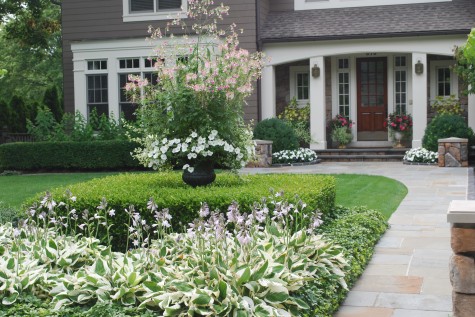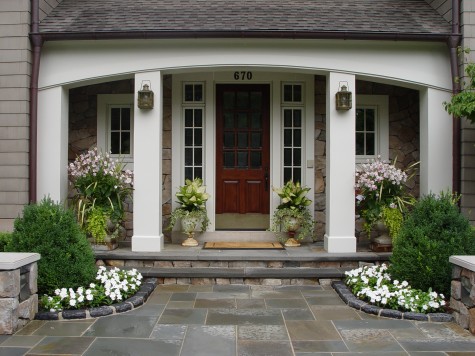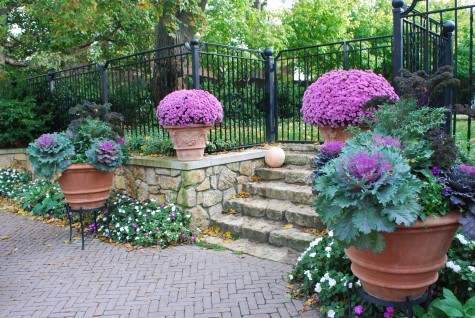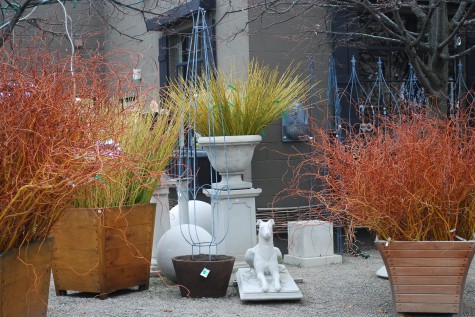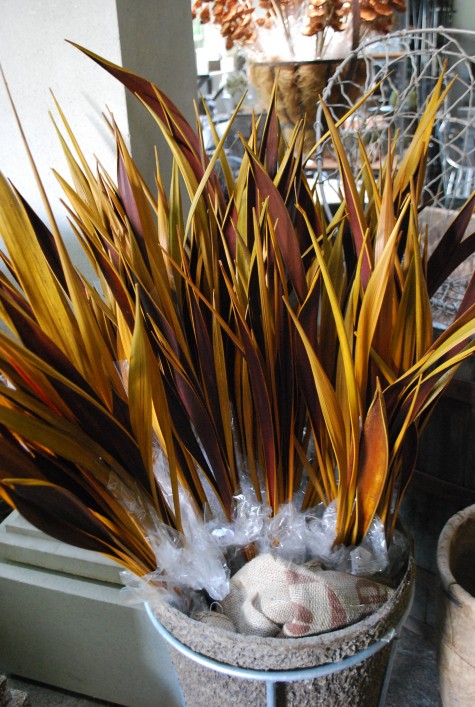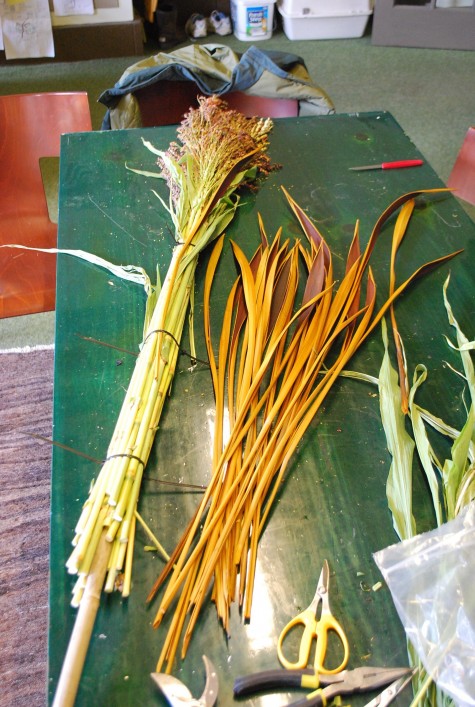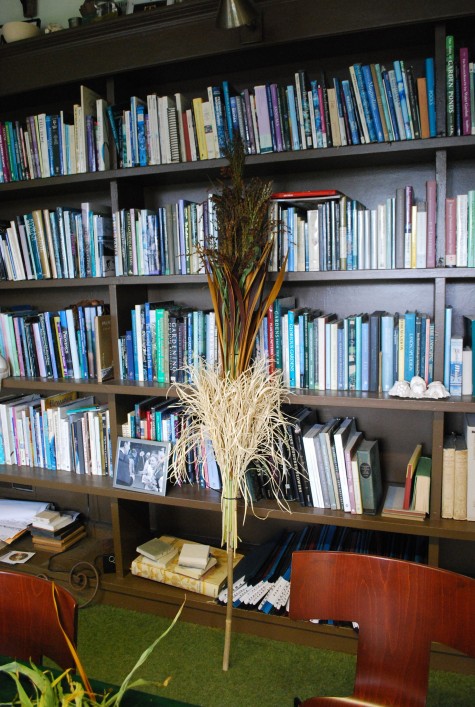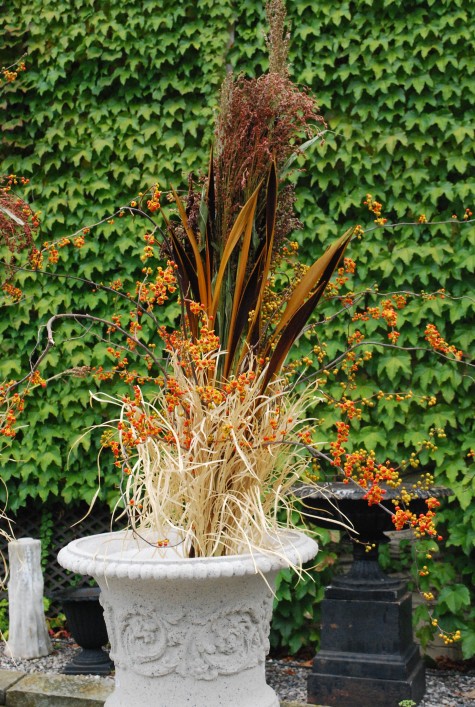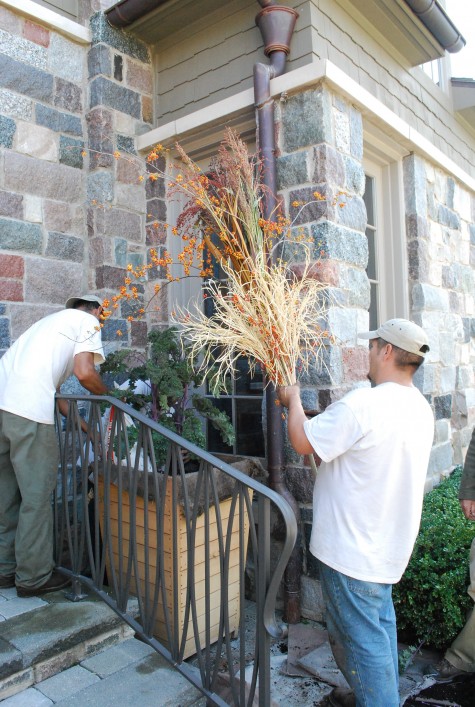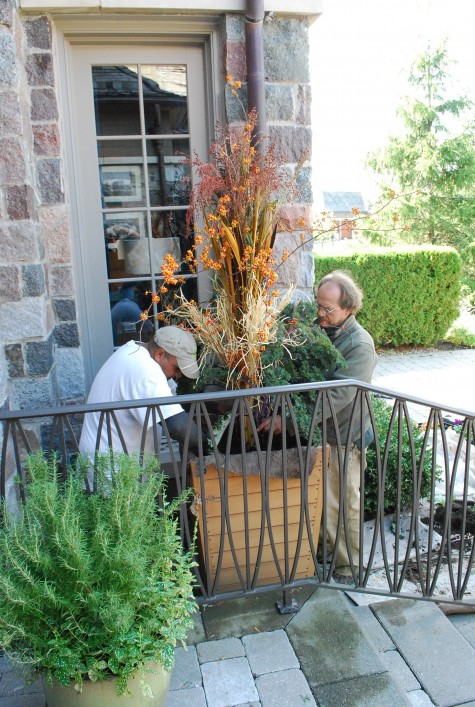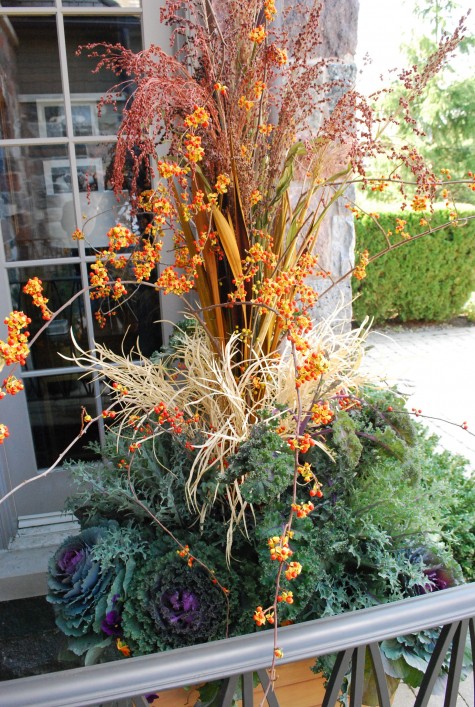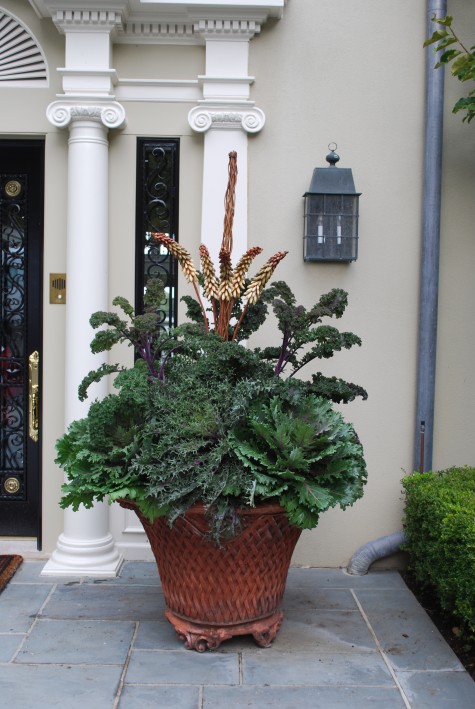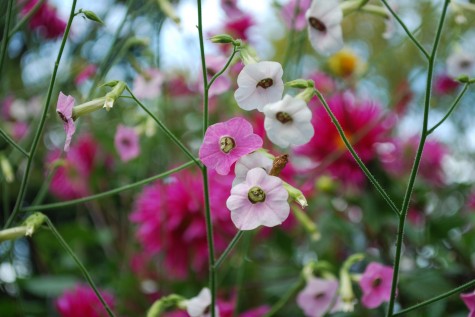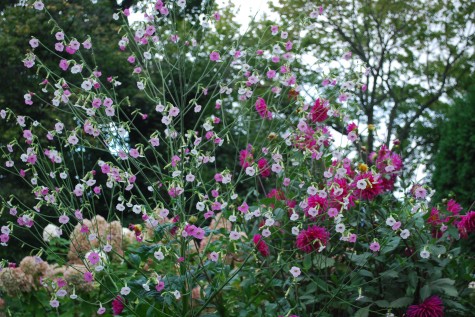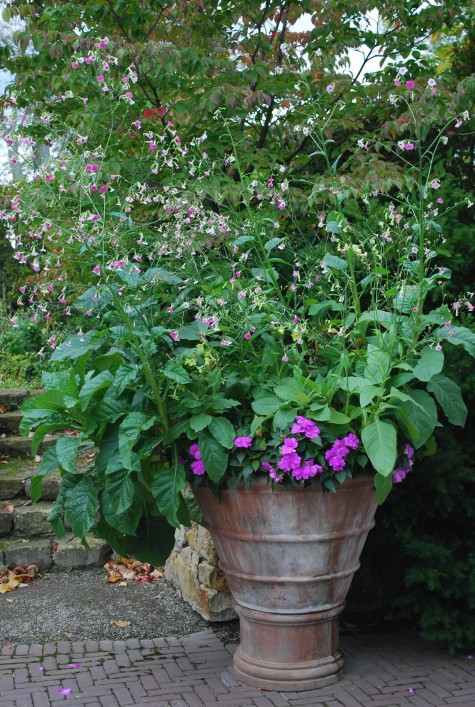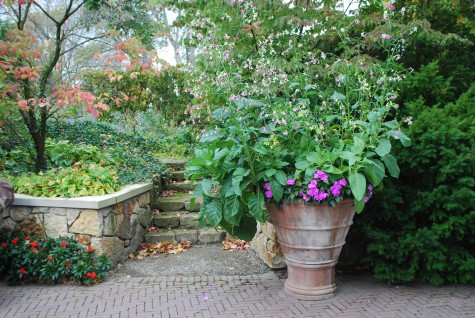I greatly admire any expression that is airy, artless, graceful, breezy, unstudied, beautifully accidental or subtle- underwrought. What do I admire this? I greatly admire that which is the most difficult for me to achieve with a planting. Luckily, I have help from the plant kingdom. I have never loved the look of hosta flowers. Sometimes I go so far as to cut them off before they bloom-reckless, I know. But in a sunny spot, the grey/lavender of these flowers is beautiful. The stalks going this way and that-artless. Both nicotiana mutabilis and dward cleome have wispy flowers that flutter in the slightest breeze. Anchored with a solidly blooming base of petunias, this planting is a meadow in a pot. This planting had a lot of help from nature.
The pale pink nicotiana in the outside pots on this porch-who knew how pretty they would be with a pair of white dieffenbachia. A few spiky leaves of green New Zealand flax unexpectedly echo that dieffenbachia color. The variegated ivy is a casual and airy compliment to those stiff paddle shaped leaves. This planting was better than I thought it could be. I credit the plants for that.
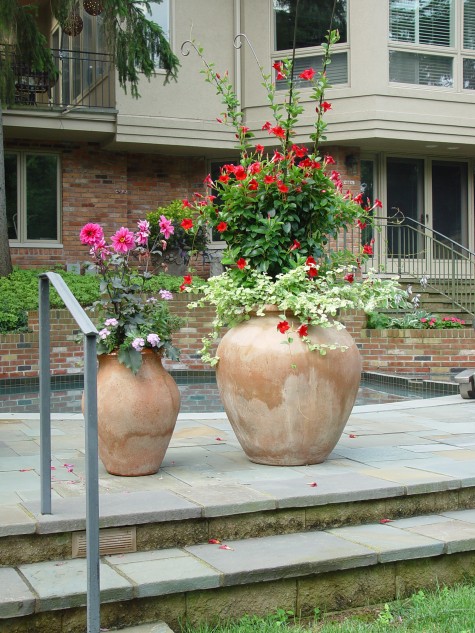 Mandevillea is one of my favorite summer plants. Vining plants have a way of growing that sets a planting free. They will grab any airborn support. Lacking support, they will vine down and out. Variegated licorice has stiff stems-but they grow every which way. I call it the cowlick plant. It provides some stiff horizontal support to the mandevillea vines that wander. Some of the red mandevillea flowers appear to be floating, do they not?
Mandevillea is one of my favorite summer plants. Vining plants have a way of growing that sets a planting free. They will grab any airborn support. Lacking support, they will vine down and out. Variegated licorice has stiff stems-but they grow every which way. I call it the cowlick plant. It provides some stiff horizontal support to the mandevillea vines that wander. Some of the red mandevillea flowers appear to be floating, do they not?
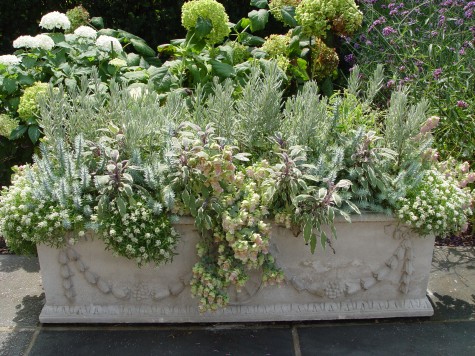
Plants with subtly colored flowers and foliage have that airy look, no matter their habit. Succulents and herbs tolerate close planting, as long as I am careful not to overwater. Closely planted plants make a community of one, as long as I do not interfere too much. Plants left to weave in and out of each other make their own statement. This staement is infinitely more interesting and beautiful than anything I could engineer.
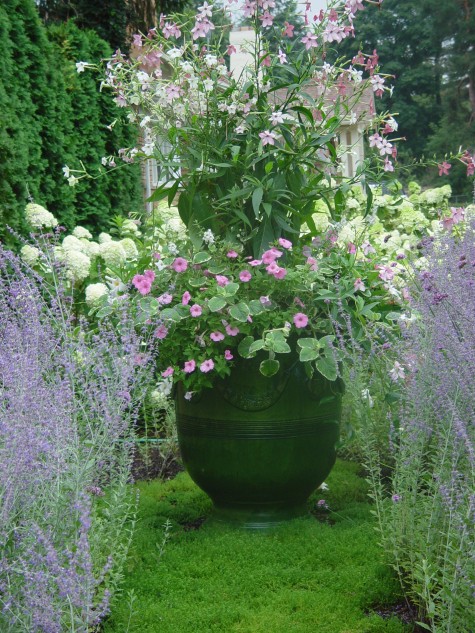 Pots placed on porches, pillars, pedestals and promenades make a studied design statement before they are planted. A pot set in a garden bed comes out of the gate with an entirely different attitude. This entirely formal French pot from the Poterie Madeleine has a planting that reflects the garden.
Pots placed on porches, pillars, pedestals and promenades make a studied design statement before they are planted. A pot set in a garden bed comes out of the gate with an entirely different attitude. This entirely formal French pot from the Poterie Madeleine has a planting that reflects the garden.
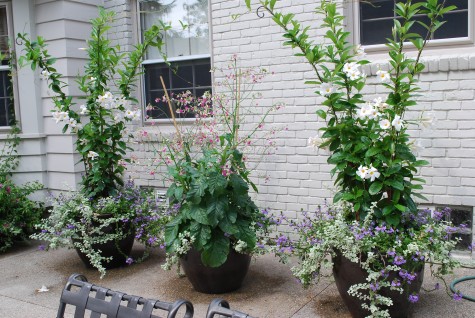 Some clients like that wispy, artless look. They like subtle colors. They like the air as much as they like the flowers. Small flowers nurture that airy look. How hard is it to make a dahlia look graceful? You know the problem.
Some clients like that wispy, artless look. They like subtle colors. They like the air as much as they like the flowers. Small flowers nurture that airy look. How hard is it to make a dahlia look graceful? You know the problem.
 Verbena bonariensis wrote the book on airy, breezy and cloudlike. I plant it every chance I get. In containers, it can loosen up the most formal of landscapes. It can define the airspace above an urn. It needs very little in the way of staking.
Verbena bonariensis wrote the book on airy, breezy and cloudlike. I plant it every chance I get. In containers, it can loosen up the most formal of landscapes. It can define the airspace above an urn. It needs very little in the way of staking.
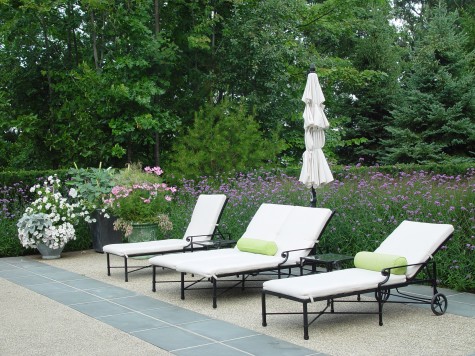 Verbena bonariensis in the ground-stellar. Imagine this space planted with impatiens-ho hum. This clean and crisp terrace furniture is all the more striking given the contrasting cloud of verbena in the background.
Verbena bonariensis in the ground-stellar. Imagine this space planted with impatiens-ho hum. This clean and crisp terrace furniture is all the more striking given the contrasting cloud of verbena in the background.
 Gardeners may think what they have to work with is the soil. But in fact, they also have an airspace just asking for some attention.
Gardeners may think what they have to work with is the soil. But in fact, they also have an airspace just asking for some attention.
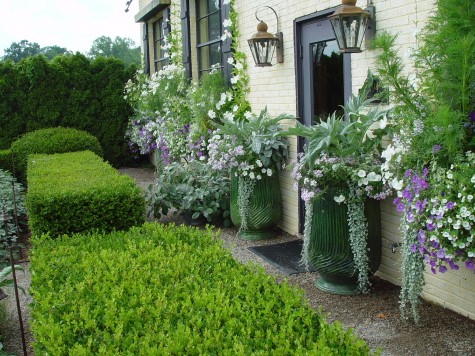 What overflows, what moves in the slightest breeze, what grows in out and around-this is a look I treasure. Loose and lovely.
What overflows, what moves in the slightest breeze, what grows in out and around-this is a look I treasure. Loose and lovely.
